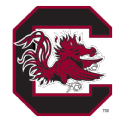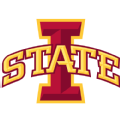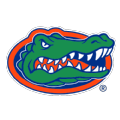March Madness Pain Index: Ranking every 2024 tournament loss

March Madness brings out some of the best in the sports community: the upsets, the storylines, the magic of three glorious weeks of win-or-go-home basketball. When "One Shining Moment" plays at the end of the tournament, even the most stoic fans can be moved to tears.
But on the other side of every upset is a fan base with high expectations whose team left far too soon. On the receiving end of every buzzer-beater is a team left walking off the court stunned, with jerseys covering their faces.
Is it possible to truly measure the level of heartbreak a team and its fans can feel after a loss in the NCAA tournament? As a Mets, Jets and 76ers fan, I'm well-versed in sports misery and consider myself equipped with enough firsthand knowledge to compile a ranking of the pain each fan base is feeling right now, from utter dejection to a nonchalant shrug.
I'm basing these rankings on pre-tournament expectations, peak win probability (according to ESPN Analytics) and other notable storylines or circumstances. Let's dive in.
67. Stetson Hatters (No. 16 seed, East)
How they lost: 91-52 to No. 1 seed UConn in the first round
Peak win probability: 1.4% with the score still 0-0
How much the loss hurt: If there was one team that was just happy to be here, it had to be the Hatters, who earned their program's first-ever tournament berth. Their prize was a date with the top overall seed, which went on to blaze through much tougher opponents this tournament. And hey, in the final 23 minutes, Stetson only lost 45-42.
66. Wagner Seahawks (No. 16 seed, West)
How they lost: 90-62 to No. 1 seed North Carolina in the first round
Peak win probability: 2.6% early in the first half, tied at 13-13
How much the loss hurt: The outcome was never truly in doubt. Besides, Wagner fans have no need to fret after earning the program's first NCAA tournament victory in the First Four against Howard.
65. Longwood Lancers (No. 16 seed, South)
How they lost: 86-46 to No. 1 seed Houston in the first round
Peak win probability: 2.0% with 10 minutes left in first half, trailing 14-9
How much the loss hurt: Let's face it, Houston's defense was eating inferior opponents for breakfast all season, and it was no different here. The Lancers can take solace in even earning a bid in the first place, thanks to their run to the Big South tournament title after a 6-10 conference record.
64. Saint Peter's Peacocks (No. 15 seed, Midwest)
How they lost: 83-49 to No. 2 seed Tennessee in the first round
Peak win probability: 2.0% at tipoff
How much the loss hurt: Fleetwood Mac had it right: The Peacocks won the MAAC tournament, climbed the mountain and turned around, but the landslide brought them down. It was 46-17 Volunteers in the first half, and it got more lopsided from there. Shaheen Holloway isn't walking through that door, but Saint Peter's fans can still rest easy on the laurels of a marvelous Elite Eight run just two seasons ago.
63. Long Beach State Beach (No. 15 seed, West)
How they lost: 85-65 to No. 2 seed Arizona in the first round
Peak win probability: 17% with 5-point lead late in first half. Arizona then went on a 24-2 run and never looked back
How much the loss hurt: Long Beach State's coach was told he wasn't returning next season prior to the Big West tournament, and the Beach summoned their inner "Major League" and won the whole thing to earn one of the more unlikely NCAA tournament bids this season. LBSU was playing with house money.
62. Yale Bulldogs (No. 13 seed, East)
How they lost: 85-57 to No. 5 seed San Diego State in round of 32
Peak win probability: 30% pregame. San Diego State started the game on a 10-0 run
How much the loss hurt: Look past this loss, Yalies. There might not have been a more exciting two-game stretch in all of college hoops this season than the Bulldogs' buzzer-beater to clinch the Ivy League autobid followed by clinging to victory at the buzzer to upset 4-seed Auburn. Our collective hearts couldn't have withstood a third consecutive classic.
61. Vermont Catamounts (No. 13 seed, South)
How they lost: 64-47 to No. 4 seed Duke in the first round
Peak win probability: 24% with 16:00 left in the second half, down by two points
How much the loss hurt: This wasn't John Becker's best chance at an NCAA tournament win -- and the Catamounts have given power conference teams a scare in the past. But from Jan. 21 on, Duke was a perfect 12-0 against teams not from North Carolina (and 2-5 vs. teams from the Tar Heel State). Last we checked, Vermont is not in North Carolina, so this loss is forgivable.
60. South Dakota State Jackrabbits (No. 15 seed, East)
How they lost: 82-65 to No. 2 seed Iowa State in the first round
Peak win probability: 9% a minute into the second half, down 42-38
How much the loss hurt: The Jackrabbits have made seven trips to the NCAA tournament in the past 13 seasons, including five of the past eight tournaments. Summit League teams aren't often given much of a chance against top-10 foes, so it's reassuring that they kept up with a hard-hitting Cyclones team for 20-plus minutes.
59. Grambling Tigers (No. 16 seed, Midwest)
How they lost: 78-50 to No. 1 seed Purdue in the first round
Peak win probability: 2.8% late in first half, trailing 31-27
How much the loss hurt: Grambling got its first NCAA tournament win in the First Four, so the 28-point loss really is an afterthought. The only reason the Tigers are a bit higher on the pain index than the other 16-seeds is that they were holding strong for most of the first half in a matchup against a Purdue squad that was determined not to lose to another 16-seed. There was a slight glimmer of hope.
58. Colgate Raiders (No. 14 seed, West)
How they lost: 92-67 to No. 3 seed Baylor in the first round
Peak win probability: 10% less than a minute into the game
How much the loss hurt: Two seasons ago, the Raiders took Wisconsin to the wire in ... another 3 vs. 14 game. In 2019, they hung tight with 2-seed Tennessee until the end. Fans of the Patriot League powerhouse knew this year wasn't their best chance at an upset; we'll see if Matt Lengel can restock for next season's run (four out of five dentists think he can).
57. Duquesne Dukes (No. 11 seed, East)
How they lost: 89-63 to No. 3 seed Illinois in the round of 32
Peak win probability: 11% at tipoff
How much the loss hurt: The Dukes had won five straight elimination games entering this one, including a stunning first-round victory over BYU. Everyone has to get off the ride at some point, but snapping a 47-year tournament drought outweighs the blowout loss.
56. Charleston Cougars (No. 13 seed, West)
How they lost: 109-96 to No. 4 seed Alabama in the first round
Peak win probability: 29% in the middle of the first half, leading 19-13
How much the loss hurt: Hey, at least the Cougars lost to a Final Four team that averaged nearly 90 points per game in this tournament so far. There have been over 6,200 Division I games played this season -- none allowed 109 points and won. Some days you're the bug; some days you're the windshield. When you're facing Nate Oats, it's often the former.
55. Akron Zips (No. 14 seed, Midwest)
How they lost: 77-60 to No. 3 seed Creighton in the first round
Peak win probability: 33% near the end of the first half
How much the loss hurt: Akron kept the game close early and took a three-point lead at 34-31, but the Zips were overmatched by a Creighton offense that shot 59% from deep, and they just couldn't keep up.
54. Morehead State Eagles (No. 14 seed, East)
How they lost: 85-69 to No. 3 seed Illinois in the first round
Peak win probability: 37% early in second half with a 2-point lead. Illinois then went on a 20-3 run
How much the loss hurt: Morehead State has won 22-plus games in four straight seasons and reached the NCAA tournament twice in that span. The worst part for the fans is knowing that five of the seven rotation players were seniors, and this might have been the best Eagles team they'd seen in a while.
53. Howard Bison (No. 16 seed, West)
How they lost: 71-68 to No. 16 seed Wagner in the First Four
Peak win probability: 62% early in first half. It was also a one-possession game in the final minute after Howard trailed by double digits
How much the loss hurt: This one stings a bit. The First Four games always pit teams against comparable foes, which means 16-seeds have as good a chance as an 8-9 game. But the Bison reaching back-to-back NCAA tournaments is still rewarding for the fan base.
52. Mississippi State Bulldogs (No. 8 seed, West)
How they lost: 69-51 to No. 9 seed Michigan State in the first round
Peak win probability: 42% at tip. The Spartans led 20-8 early and never trailed
How much the loss hurt: The Bulldogs were the underdogs going into this March meeting with Tom Izzo's squad, with a No. 1 seed on deck up next. Expectations should have been tempered from the beginning, but I'm sure fans would have liked to stay competitive for longer.
51. Northwestern Wildcats (No. 9 seed, East)
How they lost: 75-58 to No. 1 seed UConn in the round of 32
Peak win probability: 12% less than a minute into the game
How much the loss hurt: This is still a program without much of a basketball legacy, so winning a first-round tournament game, while down key players due to injuries, is significant. As we saw often in the second round, the favorite advanced without much fanfare.
50. James Madison Dukes (No. 12 seed, South)
How they lost: 93-55 to No. 4 seed Duke in the round of 32
Peak win probability: 19% pregame
How much the loss hurt: I'm sure Dukes fans wanted the Dukes to play well against Duke, hoping maybe the Dukes could upset Duke, upsetting Duke fans. But the Dukes shouldn't be too upset -- after all, they knocked off Michigan State to start the season, toppled Wisconsin to end the season and won a whopping 32 games overall.
49. McNeese Cowboys (No. 12 seed, Midwest)
How they lost: 86-65 to No. 5 seed Gonzaga in the first round
Peak win probability: 25% after scoring the first points nine seconds in
How much the loss hurt: Will Wade's squad was well-hyped heading into this matchup, but the outcome was decided early on. The final score doesn't even paint an accurate picture, as Gonzaga led by 35 before pulling its starters. If there's any pain to be felt, McNeese fans could worry Wade might take his talents to a bigger program after posting a miraculous turnaround for the Cowboys in his single season there so far, but there's no shame in losing to the Bulldogs.
48. Nebraska Cornhuskers (No. 8 seed, South)
How they lost: 98-83 to No. 9 seed Texas A&M in the first round
Peak win probability: 69%, up 20-13 at the 15:00 mark of the first half
How much the loss hurt: Look, it never feels good to allow a team to shoot 57% on its 3s. But Fred Hoiberg brought a Huskers team to its second NCAA tournament in 25 years, its first since 2014. He increased the team's win total from seven to 10 to 16 to 23 in the past three seasons. Things are still looking up for Nebraska.
47. Washington State Cougars (No. 7 seed, East)
How they lost: 67-56 to No. 2 seed Iowa State in the round of 32
Peak win probability: 45% with 3:00 left in first half
How much the loss hurt: The Cyclones' defense will swallow up even the best of offenses, so the game result in itself is understandable. And it was the Cougars' first NCAA tournament appearance since Tony Bennett took them to the Sweet 16 in 2008. Hold your head high, Wazzu nation, this was a successful season.
46. San Diego State Aztecs (No. 5 seed, East)
How they lost: 82-52 to No. 1 seed UConn in the Sweet 16
Peak win probability: 16% early in the first half, tied 10-10
How much the loss hurt: The Aztecs are 7-0 in the NCAA tournament in the past two seasons -- when they don't face the buzzsaw that is UConn. Hard to scoff at back-to-back trips to the second weekend (or better, in 2023's case). Brian Dutcher's got a good thing going, and SDSU fans can expect to be back here again soon.
45. Colorado State Rams (No. 10 seed, Midwest)
How they lost: 56-44 to No. 7 seed Texas in the first round
Peak win probability: 51% with an 8-2 lead six minutes into the first half
How much the loss hurt: Just two short days after clamping down on the Cavaliers and cruising to an ugly, watch-through-shielded-eyes victory in the First Four, the Rams turned around and pulled a Virginia of their own. CSU scored three points in the final 15 minutes of the first half and gave away all the momentum it had earned a game earlier. Niko Medved's squad has won 25 games twice in three seasons, with no second-round appearances to show for it.
44. UAB Blazers (No. 12 seed, East)
How they lost: 69-65 to No. 5 seed San Diego State in the first round
Peak win probability: 65% with 7:00 left, leading 56-53
How much the loss hurt: The Blazers finished fourth in a subpar AAC, but Andy Kennedy still got them in the tournament for the second time in three seasons. They're the poster child for all of the teams that emerged from the chaos of Champ Week with an unexpected title. It's not ideal to lose a lead in the final minutes, but this loss shouldn't hurt too much.
43. Dayton Flyers (No. 7 seed, West)
How they lost: 78-68 to No. 2 seed Arizona in the round of 32
Peak win probability: 24%, down by 3 with 11:40 remaining. Arizona then went on a 14-2 run
How much the loss hurt: The Flyers used the pick-and-roll to great success and were a few bounces away from taking control of this game. But after a furious comeback win against Nevada in the first round, it's hard to shed a tear for this loss, Dayton fans
42. Colorado Buffaloes (No. 10 seed, South)
How they lost: 81-77 to No. 2 seed Marquette in the round of 32
Peak win probability: 54% in a tie game with 3:15 left
How much the loss hurt: The Buffs snuck into the First Four after a strong regular-season finish and a program-record 26 wins and provided us with one of the best games of the tournament with a last-second shot to eliminate Florida 102-100. Was it disappointing to score just three points in four minutes to lose a close game? Sure. Will the pain linger? Probably not.
41. South Carolina Gamecocks (No. 6 seed, Midwest)
How they lost: 87-73 to No. 11 seed Oregon in the first round
Peak win probability: 70% with 8:20 left in the first half. Oregon went on a run and led by double digits for the final 15 minutes
How much the loss hurt: The Gamecocks overachieved this season. They were picked to finish last in the preseason SEC poll and finished 13-5 in a tie for second place in the league. Losing in a seed upset stings, especially with former Gamecock Jermaine Couisnard dropping 40 on them. Still, the season's accomplishments help to soften the blow of the first-round exit.
40. Texas Longhorns (No. 7 seed, Midwest)
How they lost: 62-58 to No. 2 seed Tennessee in the round of 32
Peak win probability: 43% with 1:28 left, trailing 55-53
How much the loss hurt: The Longhorns were a prototypical "middling Big 12 team": capable of some big wins, some close losses to elite teams -- but unable to put it all together consistently. They had a chance to take this game, so there's a bit of a letdown. But did you expect anything different against a Tennessee team that nearly reached the Final Four?
39. Utah State Aggies (No. 8 seed, Midwest)
How they lost: 106-67 to No. 1 seed Purdue in the round of 32
Peak win probability: 15% midway through the first half, leading by 1. Purdue then went on a 66-24 -- is that considered a run?
How much the loss hurt: So many Mountain West teams were eliminated by poor showings, but at least the Aggies won 28 games during the season, took home the conference regular-season title and reached the round of 32 for the first time since 2001.
38. TCU Horned Frogs (No. 9 seed, Midwest)
How they lost: 88-72 to No. 8 seed Utah State in the first round
Peak win probability: 85% early in first half with a 16-8 lead
How much the loss hurt: There was no massive run squandered; the Horned Frogs just struggled to guard the interior, allowing the Aggies to shoot 61% on 2-pointers. Jamie Dixon has brought TCU to three straight tourneys, with a couple of wins to show for it, but fans will have to hope he can keep bringing in transfers; this was the only season this group of eight seniors was together for.
37. Texas Tech Red Raiders (No. 6 seed, South)
How they lost: 80-67 to No. 11 seed NC State in the first round
Peak win probability: 73% two minutes into the game, leading 4-0
How much the loss hurt: Take the temperature of Red Raiders fans on the night of this loss, and it's probably too hot for a jacuzzi. But look back -- after NC State rattled off wins against 2-seed Marquette and 4-seed Duke in one of the more incredible runs of upsets in March college basketball history -- and it cools to more of a lukewarm distaste. Grant McCasland took Texas Tech to the tourney in his first season at the helm, proving the program is in good hands moving forward.
36. Western Kentucky Hilltoppers (No. 15 seed, South)
How they lost: 87-69 to No. 2 seed Marquette in the first round
Peak win probability: 50.1% with 14 seconds left in the first half. The Hilltoppers led by 10 but ran out of gas late
How much the loss hurt: Based on win probability alone, this was the closest any 15- or 16-seed got to pulling off a major upset this year. WKU returned to the tournament for the first time since 2013 in Steve Lutz's first season as head coach, which helps to curb some disappointment from being unable to close out the game.
35. Michigan State Spartans (No. 9 seed, West)
How they lost: 85-69 to No. 1 seed North Carolina in the round of 32
Peak win probability: 79% midway through first half, up 26-14
How much the loss hurt: The Spartans' season had an inauspicious start, with a loss to James Madison at home on opening night. (That loss looked less problematic as the season progressed.) The talented but inconsistent team never won more than three straight games against major conference teams, so a second-round exit feels appropriate here.
34. Gonzaga Bulldogs (No. 5 seed, Midwest)
How they lost: 80-68 to No. 1 seed Purdue in the Sweet 16
Peak win probability: 42% midway through the first half, leading by five
How much the loss hurt: In 12 of the past 15 tournaments, Gonzaga has outperformed its seed expectations. The Bulldogs did it again this year, this time with a slightly less talented roster than Mark Few has had over the years. All that's left to do for the Zags is to win the big one.
33. Oakland Golden Grizzlies (No. 14 seed, South)
How they lost: 79-73 (OT) to No. 11 seed NC State in the round of 32
Peak win probability: 60% with a one-point lead in overtime
How much the loss hurt: The Grizz went 1-9 from beyond the arc in overtime as the magic finally ran out. But falling to a Final Four team should not overshadow the upset of the tournament. Oakland will be at the forefront of the "One Shining Moment" montage, likely during the first chorus; how about bringing down the Goliath of Kentucky for your first-ever NCAA tournament win? Feels good.
32. Iowa State Cyclones (No. 2 seed, East)
How they lost: 72-69 to No. 3 seed Illinois in the Sweet 16
Peak win probability: 59% six seconds into the game
How much the loss hurt: Iowa State could defend like nobody's business, but the Cyclones' offense was predicated on forcing misses and getting out in transition. What happens when you can't get enough stops? You fall behind and are never able to retake the lead. Fun fact (for everyone except ISU fans): 39 teams have started a season unranked and ended up as a top-2 seed. ZERO of those 39 have made the Final Four.
31. Clemson Tigers (No. 6 seed, West)
How they lost: 89-82 to No. 4 seed Alabama in the Elite Eight
Peak win probability: 78% with a 13-point lead in the first half
How much the loss hurt: The Tigers won three straight games as underdogs and could have won a fourth to reach the program's first-ever Final Four. They looked dominant enough in some of their wins that fans easily could have forgotten how successful a season this was -- despite coughing up a double-digit lead against the Tide. Rest easy, folks. This team wasn't supposed to get this far.
30. New Mexico Lobos (No. 11 seed, West)
How they lost: 77-56 to No. 6 seed Clemson in the first round
Peak win probability: 42%. New Mexico scored the first points, nine seconds into the game. But it ended up trailing by double digits early, and never got within reach again
How much the loss hurt: This loss was emblematic of the Mountain West's NCAA tournament experience as a whole, as New Mexico fell to 2-6 in the tournament since joining the conference -- despite entering this game as the favorite for an upset. The seniors-led Lobos won four straight games to earn the league's autobid but turned back into a pumpkin soon after.
29. Kansas Jayhawks (No. 4 seed, Midwest)
How they lost: 89-68 to No. 5 seed Gonzaga in the round of 32
Peak win probability: 60% early in first half. Gonzaga outscored the Jayhawks 32-4 in the second half
How much the loss hurt: This team certainly underwhelmed the preseason hype after bringing in Hunter Dickinson from Michigan; "title or bust" doesn't include a second-round exit. Injuries exposed a lack of depth for Bill Self's team, and the late-season absence of Kevin McCullar Jr., coupled with Dickinson battling through injury, became too much to overcome playing two games at elevation in a span of 40 hours.
28. Boise State Broncos (No. 10 seed, South)
How they lost: 60-53 to No. 10 seed Colorado in the First Four
Peak win probability: 71%, with the Broncos up four with 4:30 left. Colorado went on an 11-0 run to close out the win
How much the loss hurt: The largest lead for most of this one was seven points, so it's hard to complain about a close, evenly matched game. But the Broncos have lost their first NCAA tournament game in three straight years. And, they shot 2-18 from deep in the loss. Shooting variance likely cost them the chance to face Florida in the first round.
27. Montana State Bobcats (No. 16 seed, Midwest)
How they lost: 88-81 (OT) to No. 16 seed Grambling in the First Four
Peak win probability: 96.1% with 14:20 left in second half. The Bobcats led for the majority of the game, but Grambling's 26-8 stretch helped send it to OT
How much the loss hurt: Unlike fellow 16-seed Howard, Montana State had a commanding lead and had a chance to win it in regulation. If there's any silver lining, it's that the Bobcats were 14-17 entering the Big Sky tournament, so a tourney berth -- even one in the First Four -- is a good consolation prize.
26. Tennessee Volunteers (No. 2 seed, Midwest)
How they lost: 72-66 to No. 1 seed Purdue in the Elite Eight
Peak win probability: 74% with 5:00 left in first half, leading 32-23
How much the loss hurt: Rick Barnes finally returned to the Elite Eight for the first time since he took Texas to the round in 2008. And he did it by finally getting some trustworthy offensive production in Dalton Knecht. That's the good news. The bad news? A Final Four was within reach with this veteran squad, and now Knecht, Josiah-Jordan James and Santiago Vescovi all depart in the offseason.
25. Grand Canyon Lopes (No. 12 seed, West)
How they lost: 72-61 to No. 4 seed Alabama in the round of 32
Peak win probability: 62% with 6:00 left, leading by 3
How much the loss hurt: On the surface, a 12-seed losing to a 4-seed in a competitive game shouldn't be very painful. A look at the box score shows otherwise: An anemic 2-for-20 (10%) from 3, paired with 14 missed free throws, meant this game was truly there for the Antelopes. Could GCU have also made the Final Four, as the Tide eventually did?
24. Baylor Bears (No. 3 seed, West)
How they lost: 72-64 to No. 6 seed Clemson in the round of 32
Peak win probability: 66% inside the first minute
How much the loss hurt: I'm not sure what stings more: losing in a seed upset, or charging back from a 15-point deficit just to miss a pair of game-tying free throws in the final minute. It might not be heartbreaking, but it sure doesn't sit well for the 2021 national champions.
23. Texas A&M Aggies (No. 9 seed, South)
How they lost: 100-95 (OT) to No. 1 seed Houston in the round of 32
Peak win probability: 50% at the start of OT
How much the loss hurt: The hottest game of the second round, this game had everything: overtime, a buzzer-beater, 75 free throws, 6 players fouling out. The Aggies scored 24 points in the final four minutes and pushed the Cougars to the limit. For a team that was sitting at 15-13 in February, narrowly missing a Sweet 16 in this fashion isn't something to scoff at. But oh, what could have been ...
22. Arizona Wildcats (No. 2 seed, West)
How they lost: 77-72 to No. 6 seed Clemson in the Sweet 16
Peak win probability: 80% at tipoff -- and 67% early in the second half
How much the loss hurt: One of the more perplexing teams this tournament, and a crowd favorite as well, the Wildcats were picked as the champion in more brackets than any non-1-seed. They would look unstoppable for weeks at a time -- and then lose by 18 to a team like Stanford. It happened again at the end of the season: three straight road losses, dominating in February, then falling by double digits to USC. An early exit from the Pac-12 tournament and the NCAA tournament leaves us all wanting more from Tommy Lloyd's consistently good teams.
21. NC State Wolfpack (No. 11 seed, South)
How they lost: 63-50 to No. 1 seed Purdue in the Final Four
Peak win probability: 17%
How much the loss hurt: The Wolfpack didn't want to be called a Cinderella despite an incredible run of nine straight victories to win the ACC tournament, save Kevin Keatts' job and get to the Final Four. Older fans will mourn that the team fell short of repeating the 1983 national championship run. Younger fans will mourn not getting to see the very likable DJ Burns Jr. just a bit longer on the national stage.
20. Alabama Crimson Tide (No. 4 seed, West)
How they lost: 86-72 to No. 1 seed UConn in the Final Four
Peak win probability: 46% just about 11 minutes into the game. The Tide were briefly up on the reigning national champions by five.
How much the loss hurt: Another victim of the No. 1 overall seed. Alabama achieved something many other teams haven't been able to do against the Huskies this tournament: lead for 21 whole seconds. Nate Oats' offensive juggernaut slips inside the top 20 only because of how spectacularly things fell apart. After shooting 8-for-11 from 3 in the first half, Alabama went a dismal 3-of-12 from 3 in the second.
19. Illinois Fighting Illini (No. 3 seed, East)
How they lost: 77-52 to No. 1 seed UConn in the Elite Eight
Peak win probability: 34% while tied late in the first half
How much the loss hurt: If this game were a movie, it would be "Avengers: Infinity War." UConn was racking up wins like infinity stones, growing more powerful by the day. Illinois was a tough test, and the game was tied 23-23. Then the Huskies snapped their fingers, and we all jumped 8 minutes and 30 unanswered points forward. The run -- against one of the best offenses in the country -- left everyone dumbfounded. It will be talked about for years. And it will remain a gut punch for the Illini for just about that long, too.
18. Purdue Boilermakers (No. 1 seed, Midwest)
How they lost: 75-60 to No. 1 seed UConn in the national title game
Peak win probability: 56% about 12 and a half minutes into the game. That was the last time the Boilermakers had a lead on the eventual national champions
How much the loss hurt: Hear us out. UConn hasn't lost to anyone in two straight NCAA tournaments. And the Huskies did Huskies things and beat the Boilers by double digits -- par for the course at this point. This only hurts because Purdue is still national championship-less, the Big Ten is still in its own drought (no winners since 2001) and big man Zach Edey isn't returning next season.
17. Creighton Bluejays (No. 3 seed, Midwest)
How they lost: 82-75 to No. 2 seed Tennessee in the Sweet 16
Peak win probability: 63% late in the first half, leading by four
How much the loss hurt: For a second straight season, Creighton either matched or outperformed seed-level expectations, and it played well in doing so. But this game against Tennessee felt winnable -- just as last year's loss to San Diego State was. The 2023-24 Bluejays were supposed to take the next step. Instead, they fell short, and the best trio in college basketball this season was robbed of the chance to win it all.
16. Marquette Golden Eagles (No. 2 seed, South)
How they lost: 67-58 to No. 11 seed NC State in the Sweet 16
Peak win probability: 83%, two minutes into the game. NC State then took a 20-10 lead.
How much the loss hurt: Marquette had one of the more unique tournament experiences: facing three double-digit seeds, trailing in the second half in all three, but winning two of them. It's a bit of a letdown that Tyler Kolek & Co. couldn't get much further than last year's team, which also lost earlier than projected. Has the Shaka Smart magic worn off?
15. Houston Cougars (No. 1 seed, South)
How they lost: 54-51 to No. 4 seed Duke in the Sweet 16
Peak win probability: 88% after taking an 8-0 lead
How much the loss hurt: This was one of the tougher games to rank. Knowing ahead of time thatJamal Shead would leave early with an ankle injury makes the defeat more explainable, though one can't help but think Houston could have and should have won this game anyway. Instead, it's another game of "what if" that follows last season's Sweet 16 loss, also as a 1-seed.
14. Samford Bulldogs (No. 13 seed, Midwest)
How they lost: 93-89 to No. 4 seed Kansas in the first round
Peak win probability: 37% with 4:30 left, down two; then 34% with 20 seconds left, down one
How much the loss hurt: The refs called a foul on a wild chase-down block that would have given Samford a 5-on-4 opportunity for the win on the final possession. Instead, Bulldogs fans and upset-minded bracket pickers alike were left debating. One of the toughest ways to lose as a team that entered the tournament with nothing to lose.
13. North Carolina Tar Heels (No. 1 seed, West)
How they lost: 89-87 to No. 4 seed Alabama in the Sweet 16
Peak win probability: 79% at halftime, 76% with 6:00 left, 67% with 1:30 left
How much the loss hurt: Armando Bacot, 24-year-old fifth-year senior. Cormac Ryan, 25-year-old fifth-year senior. RJ Davis, senior and first-team All-American. The Heels went from national runners-up to missing the tournament entirely, to rebounding (literally and figuratively) to a 1-seed. A close loss to a Final Four team is forgivable, sure, but a senior-led team that's (mostly) been there before? This is the type of group that's built to win in March, and the Tar Heels underperformed by fading down the stretch.
12. Virginia Cavaliers (No. 10 seed, Midwest)
How they lost: 67-42 to No. 10 seed Colorado in the First Four
Peak win probability: 66% in the game's opening minutes at 2-0. Then the rout ensued.
How much the loss hurt: This was a troubling loss for a Cavaliers program that hasn't won an NCAA tournament game since winning it all in 2019. What little offense Virginia had this season completely disappeared against the Buffaloes, as it went scoreless for over 12 minutes and had 14 points through 23 minutes. I don't know if it feels better to have earned a tournament bid or worse, because haters will use this as evidence that the Cavaliers didn't deserve it in the first place.
11. Duke Blue Devils (No. 4 seed, South)
How they lost: 76-64 to No. 11 seed NC State in the Elite Eight
Peak win probability: 91% with 1:40 left in the first half, leading 27-18
How much the loss hurt: The sentiment with the Blue Devils is often "Final Four or bust," but Jon Scheyer leading Duke to 27 wins in each of his first two seasons at the helm should not be overlooked. It certainly would have made more sense to beat NC State and lose to Houston -- rather than beating Houston and surrendering a nine-point lead to the 11-seed in-state rivals -- but that's the way the cookie crumbles sometimes.
10. Wisconsin Badgers (No. 5 seed, South)
How they lost: 72-61 to No. 12 seed James Madison in the first round
Peak win probability: 68% at tipoff. JMU never trailed and held at least a five-point lead for the final 37 minutes.
How much the loss hurt: Are we sure the seeds weren't switched here? A normally sure-handed Badgers team committed 19 turnovers against the Dukes' pressure defense. Many saw the upset coming due to the contrast in styles (and Wisconsin losing 10 of 16 to end the season), but it still doesn't explain the listlessness of the loss. Bucky Badger hasn't seen the second weekend since 2017.
9. Saint Mary's Gaels (No. 5 seed, West)
How they lost: 75-66 to No. 12 seed Grand Canyon in the first round
Peak win probability: 80% while up 24-20 with 4:30 left in the first half. Grand Canyon went on a 30-10 run and held off a late push from the Gaels.
How much the loss hurt: What started out as a typical Saint Mary's grind-it-out matchup quickly turned into a disaster, as the vaunted defense had one of its worst stretches of the season. The Gaels had only lost one game in 2024 -- to a Gonzaga team they also beat twice -- so there was hope Randy Bennett's third straight 5-seed could finally yield a Sweet 16 berth. The deepest chasm in the United States had other plans.
8. Drake Bulldogs (No. 10 seed, East)
How they lost: 66-61 to No. 7 seed Washington State in the first round
Peak win probability: 90% with 6:45 left, up 54-46. Washington State used a 15-5 run to take a two-point lead at the 2:00 mark and never let go.
How much the loss hurt: The Bulldogs had to fight tooth and nail to outlast Indiana State for the MVC autobid and compete in their third tournament in four seasons. While there's nothing wrong with a loss to a 7-seed, especially after tying a school record for wins, but blowing an eight-point lead isn't pretty. Adding sting to the wound is the exodus of the Bulldogs' core, after head coach Darian Devries departed for the West Virginia gig and his son, leading scorer Tucker, followed suit.
7. Florida Atlantic Owls (No. 8 seed, East)
How they lost: 77-65 (OT) to No. 9 seed Northwestern in the first round
Peak win probability: 76% with 30 seconds left, with the ball, up by 2. Northwestern tied it after a missed FAU FT and then dominated OT.
How much the loss hurt: Coming off a Cinderella Final Four run, expectations were high for the Owls. However, the relative apathy from Dusty May's team at the end of regulation -- heaving a contested 3 when the play started with more than enough time for a pass or drive -- leaves a sour taste in your mouth.
6. Florida Gators (No. 7 seed, South)
How they lost: 102-100 to No. 10 seed Colorado in the first round
Peak win probability: 85% while up 24-14 in the first half; Colorado hit a game winner in the final seconds.
How much the loss hurt: After losing center Micah Handlogten in the SEC title game, a promising outlook was slightly muted entering the NCAA tournament. However, an early lead, coupled with a 13-point comeback in the closing minutes, led to one of the most exciting finishes March had to offer (except for Gators fans).
5. BYU Cougars (No. 6 seed, East)
How they lost: 71-67 to No. 11 seed Duquesne in the first round
Peak win probability: 82% at tipoff. The Cougars clawed back from a double-digit deficit but couldn't take the lead.
How much the loss hurt: BYU allowed runs of 12-2, 14-1 and 13-2, all in the first 25 minutes. That the Cougars tied it up at 60 was encouraging, yet the upset loss feels worse because (a) hope existed for a full 40 minutes, and (b) it was the first seed upset of the tournament, and the first game that busted most people's brackets.
4. Oregon Ducks (No. 11 seed, Midwest)
How they lost: 86-73 (2OT) to No. 3 seed Creighton in the round of 32
Peak win probability: 85% with 1:04 left, leading 62-58, with the ball
How much the loss hurt: This one hurts. The Ducks missed a free throw that could have helped seal the win, still had a chance to win in regulation, pushed it to another extra period -- and then just waved the white flag. Dana Altman has gotten Oregon to the second weekend four times in eight tournaments, so it's not a program-defining problem. But they realistically should have closed it out.
3. Kentucky Wildcats (No. 3 seed, South)
How they lost: 80-76 to No. 14 seed Oakland in the first round
Peak win probability: 91% in the opening minute. Kentucky never led by more than two and was within one point in the final minute.
How much the loss hurt: Variance hit hard in this one. The Wildcats shot 32% from deep while Oakland hit 48%; the swishes of Jack Gohlke's 10 makes will echo through the halls for years to come. For UK fans, though, it's yet another March disappointment after losing to 15-seed Saint Peter's in 2022 and entirely missing the tournament in 2021. Freshman-led teams continue to underperform on the big stage, even ones with potential first-round draft picks coming off the bench. At least we know the Kentucky fan base handles bad losses well.
2. Auburn Tigers (No. 4 seed, East)
How they lost: 78-76 to No. 13 seed Yale in the first round
Peak win probability: 94% with 7:30 left, leading 68-58. A 17-4 run gave Yale a 3-point lead, and the Tigers missed 3 FT and 2 FG attempts in the final 10 seconds
How much the loss hurt: Despite being a 4-seed, Auburn was picked to win it all in more than 3% of Tournament Challenge brackets, more than 2-seed Marquette and more than any 3-seed not named Kentucky. Simply put, the SEC tournament champs suffered their worst loss of the season at the worst possible time.
1. Nevada Wolf Pack (No. 10 seed, West)
How they lost: 63-60 to No. 7 seed Dayton in the first round
Peak win probability: 99.5% while up 56-39 with 7:30 left. The Wolf Pack went on a 22-4 run spanning halftime and looked to have the game sealed, but Dayton went a perfect 7-7 FG and 5-5 FT to end the game and complete the miraculous comeback.
How much the loss hurt: We didn't see a lot of Undertaker coffin GIFs in the 2024 tournament, with very few turnarounds of this magnitude. Nevada's collapse has to take the cake in these rankings, even as only 1.5-point favorites that lost by three. As the lead dwindled, it still didn't feel like the Flyers could actually pull it off, and the Wolf Pack had multiple chances late to win or send the game to OT. If an alien ever visits Earth and asks me to describe March Madness, this is the game film I'm pulling.
Related Topics
- SPORTS
- ESPN
- TCU HORNED-FROGS
- YALE BULLDOGS
- KANSAS JAYHAWKS
- GONZAGA BULLDOGS
- ILLINOIS FIGHTING-ILLINI
- AUBURN TIGERS
- CLEMSON TIGERS
- WAGNER SEAHAWKS
- UAB BLAZERS
- CREIGHTON BLUEJAYS
- TEXAS TECH-RED-RAIDERS
- DAYTON FLYERS
- NEBRASKA CORNHUSKERS
- WASHINGTON STATE-COUGARS
- NORTHWESTERN WILDCATS
- SAMFORD BULLDOGS
- FLORIDA ATLANTIC-OWLS
- BAYLOR BEARS
- HOUSTON COUGARS
- PURDUE BOILERMAKERS
- CHARLESTON COUGARS
- MISSISSIPPI STATE-BULLDOGS
- LIST
- UTAH STATE-AGGIES
- BOISE STATE-BRONCOS
- NORTH CAROLINA-TAR-HEELS
- DUQUESNE DUKES
- SAINT MARYS-GAELS
- DAILY
- GRAMBLING TIGERS
- NC STATE-WOLFPACK
- LONG BEACH-STATE-BEACH
- IOWA STATE-CYCLONES
- VERMONT CATAMOUNTS
- FLORIDA GATORS
- SAINT PETERS-PEACOCKS
- OREGON DUCKS
- DUKE BLUE-DEVILS
- GRAND CANYON-LOPES
- SOUTH DAKOTA-STATE-JACKRABBITS
- MOREHEAD STATE-EAGLES
- WESTERN KENTUCKY-HILLTOPPERS
- NEW MEXICO-LOBOS
- ARIZONA WILDCATS
- TEXAS LONGHORNS
- COLGATE RAIDERS
- DRAKE BULLDOGS
- VIRGINIA CAVALIERS
- SAN DIEGO-STATE-AZTECS
- COLORADO STATE-RAMS
- OAKLAND GOLDEN-GRIZZLIES
- HOWARD BISON
- MCNEESE COWBOYS
- SOUTH CAROLINA-GAMECOCKS
- LONGWOOD LANCERS
- NEVADA WOLF-PACK
- BYU COUGARS
- AKRON ZIPS
- KENTUCKY WILDCATS
- MENS COLLEGE-BASKETBALL
- TEXAS A-M-AGGIES
- MARQUETTE GOLDEN-EAGLES
- MONTANA STATE-BOBCATS
- JAMES MADISON-DUKES
- COLORADO BUFFALOES
- MICHIGAN STATE-SPARTANS
- ALABAMA CRIMSON-TIDE
- WISCONSIN BADGERS
- NEWS NCAA-TOURNAMENT
- STETSON HATTERS
- TENNESSEE VOLUNTEERS










































































